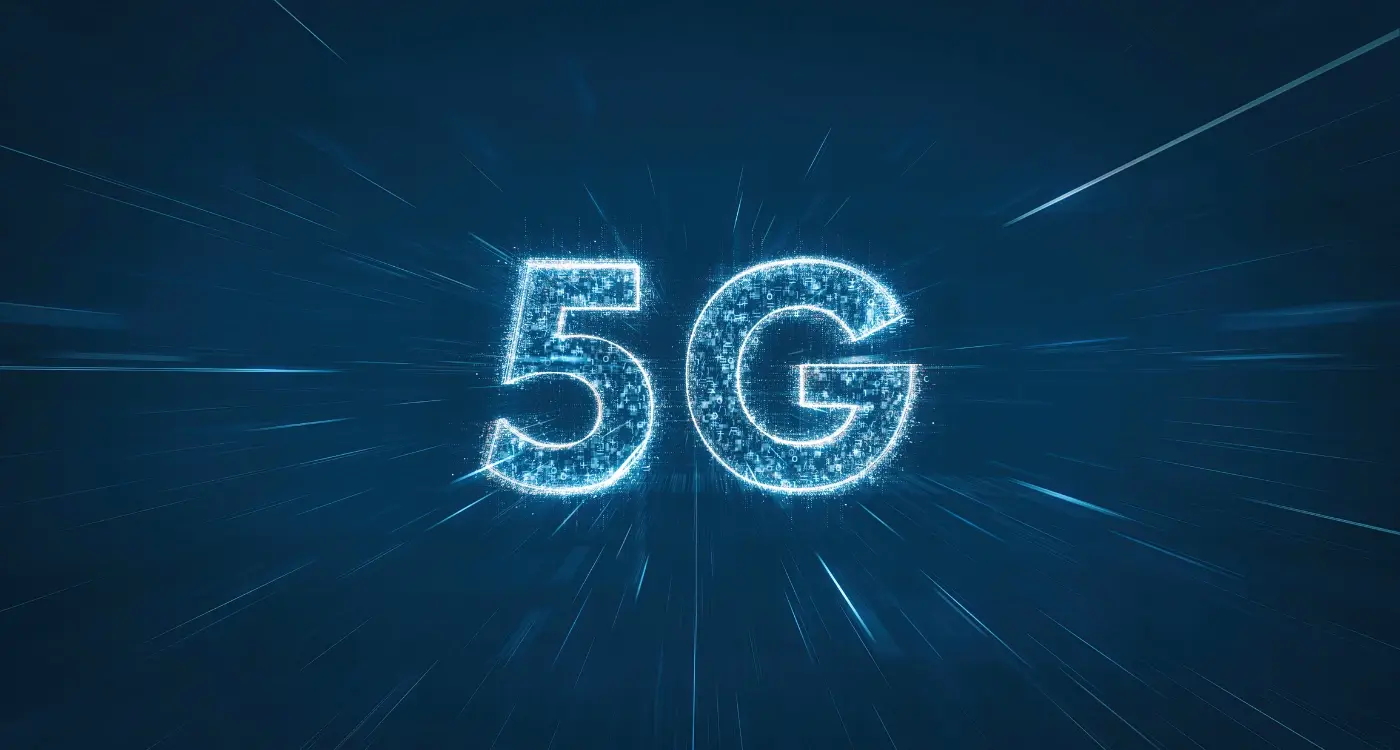What's The Difference Between 4G And 5G App Development?
When you tap your favourite mobile app, something remarkable happens in milliseconds—your phone connects to cell towers, data races through networks, and information appears on your screen. But here's what most people don't realise: the network powering that connection can completely change how your app works, looks, and feels. The jump from 4G to 5G isn't just about faster speeds; it's reshaping how we build mobile apps from the ground up.
As someone who's worked with countless app development projects, I've watched this network evolution transform what's possible. We're not just talking about downloading videos quicker—though that's nice! We're looking at fundamentally different approaches to mobile app development, each with unique challenges and opportunities.
The difference between 4G and 5G app development isn't just technical—it's about reimagining what mobile experiences can be
This guide will walk you through the key differences between developing for 4G and 5G networks. We'll explore how network speeds affect performance, what changes in user experience, and most importantly, what developers need to consider when building for each technology. Whether you're planning a new mobile app or wondering if your existing app needs updates for 5G, understanding these network differences will help you make better development decisions.
Understanding 4G Networks
I've been working with mobile apps since before 4G was even a thing—back when we were all struggling with 3G speeds that made downloading a single photo feel like waiting for paint to dry! When 4G finally arrived, it changed everything for mobile app developers like myself. The fourth generation of mobile networks brought speeds that were roughly ten times faster than 3G, which opened up possibilities we'd only dreamed about.
4G networks operate on different frequency bands and use a technology called LTE (Long Term Evolution). This isn't just marketing speak; it genuinely delivers download speeds between 5-12 Mbps on average, though in perfect conditions you might see speeds up to 50 Mbps. Upload speeds are typically slower, usually around 2-5 Mbps, but that's still a massive improvement over what came before.
Key 4G Network Features
- Average download speeds of 5-12 Mbps
- Latency around 50-100 milliseconds
- Better support for video streaming and real-time apps
- More reliable connections in crowded areas
- Improved battery efficiency compared to 3G
The lower latency—that's the delay between sending and receiving data—meant we could finally build apps that felt responsive. Video calls became smoother, games could handle real-time multiplayer, and streaming services flourished. From a development perspective, 4G gave us the bandwidth to create richer, more interactive experiences without constantly worrying about users hitting data limits or experiencing frustrating delays.
Understanding 5G Networks
Right, so we've covered 4G—now let's talk about 5G, the network technology that's been making headlines everywhere. I'll be honest, when 5G first started rolling out, I was sceptical about whether it would live up to the hype. But after working with it for mobile app development, I can tell you it's genuinely impressive.
5G networks are the fifth generation of mobile network technology, and they're built to be much faster and more reliable than 4G. We're talking about speeds that can reach up to 20 gigabits per second—that's about 100 times faster than 4G! But speed isn't the only improvement; 5G also has something called ultra-low latency, which means there's barely any delay when your phone sends information to the network.
Key Features of 5G Networks
- Speeds up to 20 Gbps (compared to 4G's 1 Gbps maximum)
- Latency as low as 1 millisecond
- Better connectivity in crowded areas
- Support for more devices connected simultaneously
- Improved battery life for connected devices
What makes 5G particularly exciting for mobile app developers is its ability to handle massive amounts of data without breaking a sweat. This opens up possibilities for apps that simply wouldn't work properly on 4G networks—think augmented reality games, real-time video collaboration tools, or apps that need instant responses.
When developing for 5G, don't assume all users will have access to these speeds immediately. Always build in fallback options for 4G users to ensure your app works well across all network types.
How Network Speed Affects Mobile App Performance
Network speed is one of those things that can make or break your mobile app experience. I've seen perfectly designed apps crumble under poor network conditions—and trust me, users don't blame their connection, they blame your app! The reality is that network speed directly impacts how quickly your app loads, how smoothly it runs, and whether users stick around long enough to actually use it.
When your app tries to fetch data from a server, the network speed determines how long users wait for content to appear. On slower networks, images take ages to load, videos buffer constantly, and real-time features like chat or live updates become frustratingly sluggish. Users expect apps to work instantly; they won't wait more than a few seconds before giving up and moving on.
Key Performance Areas Affected by Network Speed
- App startup time and initial loading screens
- Image and video streaming quality
- Real-time messaging and notifications
- Database synchronisation and cloud backups
- In-app purchases and payment processing
- Social features like sharing and commenting
The difference between 4G and 5G becomes obvious when you consider these performance factors. While 4G networks typically offer download speeds of 20-50 Mbps, 5G can deliver speeds exceeding 1 Gbps. This massive jump doesn't just mean faster downloads—it opens up entirely new possibilities for what mobile apps can do without frustrating users.
Data Transfer and User Experience Differences
When I'm working with clients on mobile app development strategy, one of the biggest misconceptions I encounter is that faster networks automatically mean better apps. Yes, 5G can transfer data at speeds up to 100 times faster than 4G—but speed isn't everything. The real magic happens in how that speed translates to user experience.
On 4G networks, your mobile app needs to be patient. Video calls might stutter during peak hours, large file downloads take time, and real-time features like live streaming can feel sluggish. Users have learned to expect these delays, so they're more forgiving when things take a moment to load.
The 5G Experience Revolution
5G changes the game completely. We're talking about near-instant responses, seamless video streaming, and the ability to handle multiple data-heavy tasks simultaneously without breaking a sweat. But here's the catch—users now expect perfection.
The faster the network, the less patience users have for any delays whatsoever
This creates interesting challenges for app developers. With 4G, we optimised for efficiency and compression; with 5G, we can focus on rich, immersive experiences. The technology comparison reveals that whilst 4G apps prioritise lightweight functionality, 5G apps can embrace features like augmented reality, instant cloud synchronisation, and real-time collaboration without worrying about network limitations.
Development Considerations for 4G Apps
When I'm developing apps for 4G networks, I spend a lot of time thinking about bandwidth limitations. 4G gives us decent speeds—usually between 10-50 Mbps in real-world conditions—but that's still nowhere near what 5G promises. This means I need to be clever about how the app handles data.
The biggest challenge? Battery life. 4G modems are power-hungry beasts, and if your app is constantly pulling data, users will notice their battery draining faster than they'd like. I've learned to implement smart caching strategies and only fetch data when absolutely necessary. Background sync needs to be handled carefully too—nobody wants an app that kills their phone by lunchtime.
Key 4G Development Strategies
- Compress images and videos before sending them over the network
- Use progressive loading for content-heavy screens
- Implement offline functionality wherever possible
- Cache frequently accessed data locally
- Optimise API calls to reduce the number of requests
Latency is another beast entirely. 4G typically gives us 30-50ms of latency, which sounds fast but can feel sluggish for real-time features. If you're building anything that needs instant responses—like gaming or live chat—you'll need to build in smart prediction algorithms and local processing to mask that delay. This is particularly important when considering technical challenges in specialised app development.
Development Considerations for 5G Apps
When I'm working on a 5G mobile app, the first thing I tell my team is this: forget everything you know about playing it safe with data. The network differences between 4G and 5G mean we can finally stop worrying about tiny file sizes and start thinking big. Really big. We're talking about apps that can stream 4K video without buffering, download massive files in seconds, and handle real-time data like it's nothing.
But here's the thing—and this is where many developers get it wrong—just because you can doesn't mean you should go crazy with bandwidth. Your users might still be switching between 5G and 4G networks throughout the day, so smart apps need to adapt. I always build in network detection that scales features up or down based on what's available.
Real-Time Features and Low Latency
The technology comparison between 4G and 5G really shines when we talk about latency. With 5G's ultra-low delays, you can build features that were impossible before: real-time gaming, instant video calls, and live streaming without any lag. Your app can respond to user actions almost instantly, which completely changes how people interact with your mobile app. This opens up possibilities for enhanced assistive technology integration and more responsive mobile experiences.
Always include fallback options for users who might not have 5G coverage yet—your app should work brilliantly on both networks.
Conclusion
After working with both 4G and 5G technologies in mobile app development, I can tell you that the differences between them are quite significant—but that doesn't mean you should panic about your current 4G app suddenly becoming obsolete. The truth is, 4G networks still serve millions of users perfectly well for most app functions, and they'll continue to do so for years to come. Learning from past app development mistakes can help ensure your app succeeds regardless of the network technology.
What's really exciting about 5G development is the new possibilities it opens up. We're talking about apps that can handle real-time augmented reality without lag, instant file sharing regardless of size, and gaming experiences that feel more like console quality. But here's the thing—these aren't just pipe dreams anymore; they're becoming reality as 5G coverage expands. Whether you're building a minimum viable product or prototype, considering network capabilities is crucial.
The key takeaway for anyone planning an app is to think about your users' needs first. If you're building something that relies heavily on speed and low latency, 5G development might be worth the investment. If your app works brilliantly on 4G, there's no rush to rebuild everything from scratch. Smart developers are taking a hybrid approach—building apps that work well on 4G but can take advantage of 5G features when available. That's probably the wisest path forward for most projects.
Share this
Subscribe To Our Learning Centre
You May Also Like
These Related Guides

What Is 5G App Development And Why Should I Care About It?

How Do I Test My 5G App Before Launching It?



